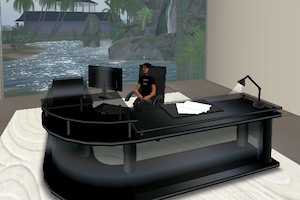 Twelve months ago we published our ten predictions for 2009. Below is the report card on them.
Twelve months ago we published our ten predictions for 2009. Below is the report card on them.
2009: how accurate was our crystal ball?
Prediction 1: OpenSim grids will bleed Second Life users – this may seem a very obvious prediction given the growth of OpenSim grids, but what I mean here is that the exodus will be obvious. It won’t be a migration that will affect Second Life’s viability (other issues may achieve that), but there will be a solid, committed population of OpenSim users choosing those grids over Second Life’s one. Put another way, new users will see OpenSim grids as an equal option to signing up to Second Life.
Pass – the growth in adoption of OpenSim has certainly grown and at the expense of Second Life. People aren’t abandoning Second Life for OpenSim en masse but there’s plenty of content creators and educators dividing their time between the two environments. Here’s one small example of that switch.
Prediction 2: Virtual worlds will appear as normal daily life in TV / Movies – To date, most appearances of virtual worlds in TV and film are either documentaries or as a central part of an action / geek film. US comedy The Office and CSI have both featured Second Life but essentially in a sensationalistic way. 2009 will see more insertions of virtual worlds into daily life scenes in shows. A disclosure here: I’m particularly confident on this one as I’ve had the pleasure of helping out on a film project that features a virtual world in a day-to-day context. More on that in the first few months of next year.
Pass – We were up front that this was an easy prediction due to our then under-wraps involvement with Beautiful Kate.
Prediction 3: There will be a net increase in Australian business in virtual worlds – Second Life won’t see any significant growth in Australian businesses entering Second Life and there may actually be a decrease. The gains will come in worlds like Twinity, customised worlds created on platforms like VastPark and possibly even some entry into enterprise worlds offered by entities like IBM and Forterra. Any increase will be driven by the increasing awareness of virtual worlds as a cost-effective business collaboration tool.
Fail – The withdrawal by Telstra from Second Life significantly reduces the level of overt Australian business presences on that platform. That said, the level of interest in virtual worlds has grown, albeit only slightly. The gains have come around collaboration and meetings. Most of the growth in interest hasn’t translated to dollars invested, but that’s on its way. Aside from Second Life, no specific platform is gaining significant traction locally from a business viewpoint.
Prediction 4: Virtual worlds will remain a political no-go zone – Australian political parties have had zero presence to date and it’s extremely unlikely to change in 2009. Any planning being done by the major parties for the 2010 Federal Election is unlikely to extend beyond services like YouTube and Twitter. Things may stretch to sites like Barack Obama’s Change site, but forget anything 3D.
Pass – As predicted, there’s no momentum politically with virtual worlds in Australia. Why? You’ll find out in coming weeks when we release our virtual worlds policy paper.
Prediction 5: Metaplace will be a game-changer – Metaplace’s simple, web-based interface combined with some impressive content creation tools will ensure a launch with impact and significant growth. There’ll be some obvious poaching of users from services like Habbo Hotel but also from content-creation havens like Second Life.
Fail – We couldn’t have got this one more wrong given Metaplace has announced its closure. Closures are expected in a competitive environment but this one was a real surprise.
Prediction 6: Virtual sex will lead to legislation – Linden Lab’s gambling, ageplay and banking clamp-downs were an early start to the reality of increased regulation and governments worldwide are increasingly scrutinising virtual world activities. Sexual exploits (aside from ageplay) have remained unregulated. For better or worse, this won’t remain.
Fail – no significant legislation has eventuated, although the proposed Australian internet filter will likely cover ageplay-related content, but that legislation hasn’t passed as yet.
Prediction 7: Australian Universities will fall further behind in incorporating virtual world training tools – Australia has some leading lights as far as virtual world and education go, something highlighted by AVWW 2008. In the wider university sector, US and UK universities are integrating virtual world training simulations in a range of areas including health and engineering. Australian universities on the whole haven’t begun thinking about this in a widespread way, even with the talented educators putting the case locally. 2009 will see the gap widen further as key universities overseas start to demonstrate significant education outcomes.
Pass – Australia has continued to lag, although the cohort of innovative educators involved with virtual environments has continued to grow and some impressive outcomes demonstrated (one example here). The lag to date comes from governing and funding bodies rather than at the grass roots level. That said it appears to be ending with some excellent, Australia-wide proposals in the works in regards to virtual worlds and tertiary education.
Prediction 8: Second Life will remain a frustrating experience – the announcement of standalone servers may prove this prediction wrong, but 2009 is unlikely to show an enormous improvement in the Second Life user experience. The user interface will certainly improve and the stability of the platform may improve exponentially. The ongoing frustration will be the same issue that’s plagued Second Life to date: regular, crushing lag. This is one prediction I’d particularly like to be proven wrong on. A sub-prediction here too: the Teen grid will continue to decline and may even close altogether.
Pass – Teen Second Life is likely to be merged into the main grid, there is somewhat of a decline in user concurrency in Second Life and although some user interface improvements have occurred, the main improvements are yet to be seen. Things are still looking very positive for Second Life overall, but the evergreen usability challenges remain.
Prediction 9: Growth, growth, growth – every metric and market research report points toward ongoing growth in the number of people spending time in virtual worlds. The new entrants will assist this growth but the incumbents will also grow. Habbo Hotel will most likely retain is dominance in raw numbers but children’s worlds like Barbie Girls, Hello Kitty Online and Club Penguin will provide an enormous userbase as well. Add to that the promising growth of Sony’s Home and you can see this is a safe prediction, but worthy of a mention.
Pass – As we said at the time, it was a no-brainer. In June 2009 the estimated number of virtual worlds users was around 186 million by one forecaster and it’s certainly grown since then.
Prediction 10: Virtual Goods will boom – the interest from business in virtual goods as a money-maker has accelerated significantly in the past six months in particular, and 2009 will see that continue. Second Life has been a leader in that aspect, followed closely by children’s worlds and gaming worlds. Goods will get more sophisticated, with much more real-world marketing efforts behind them. 2009 may also see some virtual goods out-rank popular real-life items in terms of sales and revenue.
Pass – driven by social games on platforms like Facebook, there’s been an explosive growth in the use of virtual currencies to purchase in-game goods. One industry study found that virtual currencies were the most traded virtual goods during 2009.
—
Seven out of ten correct isn’t too shabby, although there were some fairly easy wins amongst them. Our 2010 predictions will be published in the coming week. In the meantime, what are your thoughts on how 2009 played out compared to how you thought it would?
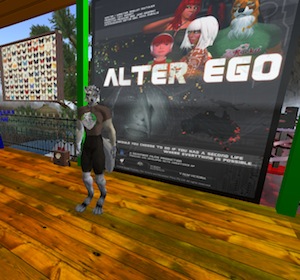 So, here I am, watching the
So, here I am, watching the 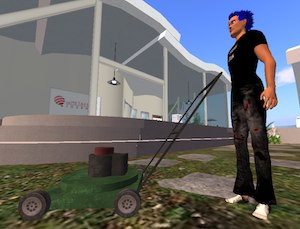 Although it’s mostly a throwback to the mid to late 20th Century, there’s still a significant cohort of Australians who associate mowing the lawn with the ‘Aussie lifestyle’ (I hate generalisations, but bear with me). There’s no shortage of people who still dream of owning their own land, on which they can inflict the weekly spring and summer routine of mowing the lawn. Last weekend I had the opportunity to do some lawn mowing, and it occurred to me that for widepsread adoption of virtual environments to occur, the in-world experience needs to be a lot more like mowing the lawn. Keep reading to see a metaphor beaten within an inch of its life.
Although it’s mostly a throwback to the mid to late 20th Century, there’s still a significant cohort of Australians who associate mowing the lawn with the ‘Aussie lifestyle’ (I hate generalisations, but bear with me). There’s no shortage of people who still dream of owning their own land, on which they can inflict the weekly spring and summer routine of mowing the lawn. Last weekend I had the opportunity to do some lawn mowing, and it occurred to me that for widepsread adoption of virtual environments to occur, the in-world experience needs to be a lot more like mowing the lawn. Keep reading to see a metaphor beaten within an inch of its life.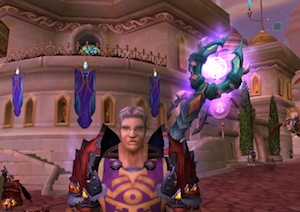 Before I question some of the hyperbole floating around the mainstream media over the ‘World of Warcraft is like crack’ story, I have to make a disclosure. I do play World of Warcraft and am in fact a Level 80 Fire Mage. Snigger all you want, but there’s dozens, if not hundreds of you reading this that play WoW too, and you love it. More on that later.
Before I question some of the hyperbole floating around the mainstream media over the ‘World of Warcraft is like crack’ story, I have to make a disclosure. I do play World of Warcraft and am in fact a Level 80 Fire Mage. Snigger all you want, but there’s dozens, if not hundreds of you reading this that play WoW too, and you love it. More on that later.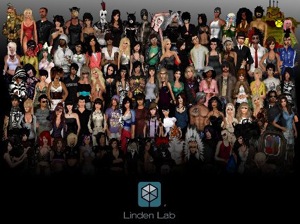
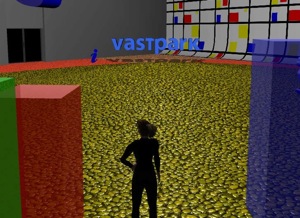
Recent Comments